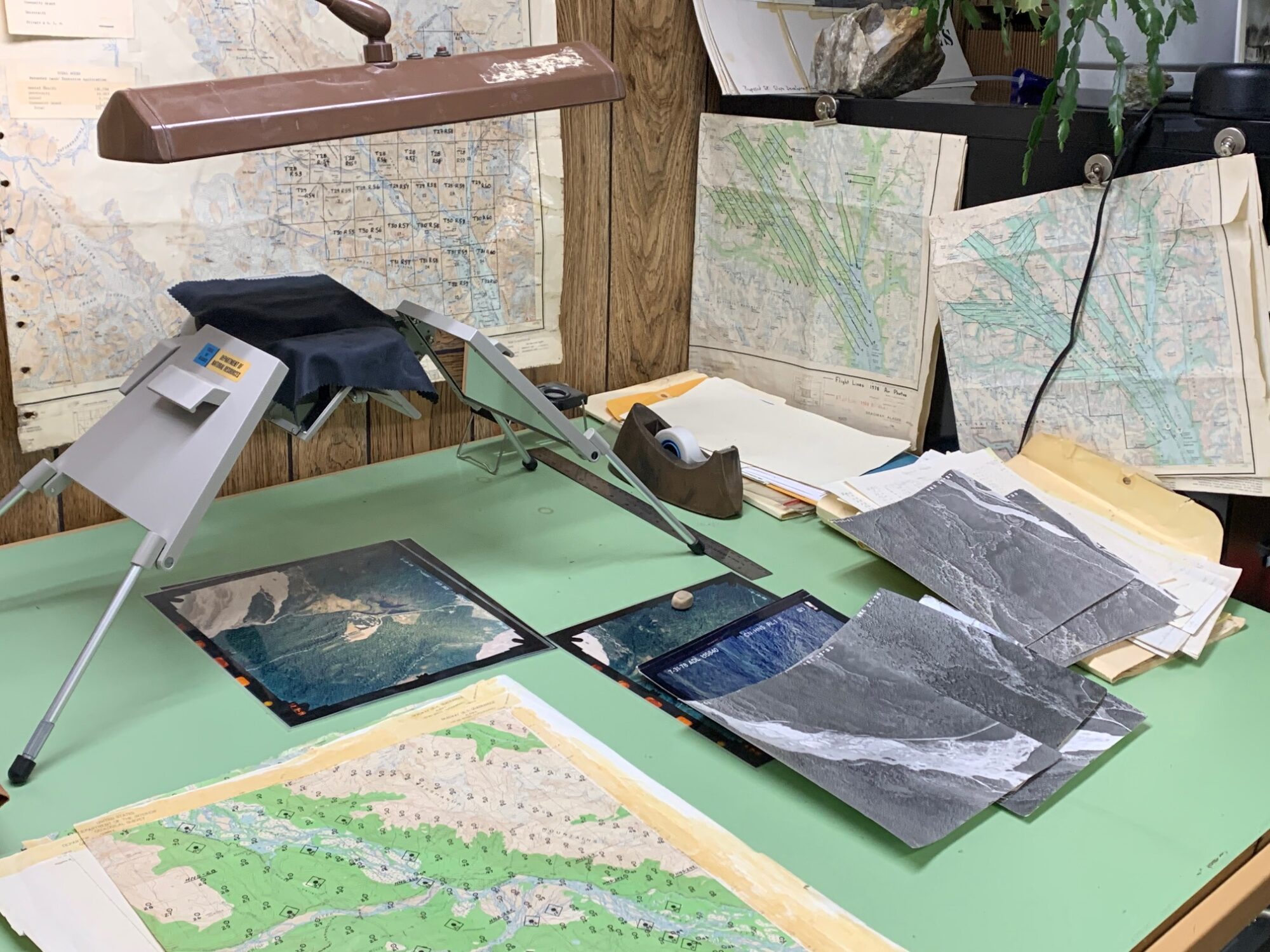
[ad_1]

The Division of Forestry office in Haines has many old aerial photographs of the state forest and a stereoscope for viewing them. (Photo by Henry Leasia)
Earlier this summer the Alaska Division of Forestry contracted a company to collect digital images of the Chilkat Valley from a plane. The aerial photos will be used alongside recent laser scans of the valley to provide information about the terrain and vegetation of the Haines State Forest. The new geographic data collection is the latest advancement in a long history of aerial photography in Haines.
The Alaska Division of Forestry has collected numerous aerial photos of the Chilkat Valley over the years. The oldest dates back to 1929. The black and white images show the contours of rivers, mountains and trees in vivid detail.
Haines State Forester Greg Palmieri says before advances in digital technology, natural resource managers would place these photos beneath a stereoscope, a device that combines two images to create the illusion of depth.
“So when you look at stereo you put these two photos together in this manner and you get three dimensional relief from the two dimensional image. So I can see terrain,” Palmieri says. “Prior to LIDAR this was the most accurate way we could have from the office to identify the terrain and potential obstacles towards development.”
LIDAR stands for light detection and ranging. It’s a way to collect data about topography. To collect the data, a plane flies over an area with a LIDAR scanner that bounces light off of the terrain below. Differences in the return times and wavelengths of the light can then be used to make 3-D images.
The state paid for a LIDAR scan of the Chilkat Valley last year. Palmieri says the technology provides useful information for foresters.
“The thing that it does well is measuring not only the height of the ground to sub-foot intervals, but also the height of vegetation,” Palmieri says.
These precise measurements allow foresters to determine things like the height of the brush compared to the height of the trees over a large swath of land.
The data collected through LIDAR can also be used with software to develop hydrology models.
“If you have very detailed topography of an area you might be able to have a very good comprehensive understanding of surface water activity. That can potentially, with some research, lead to a good understanding of groundwater flow,” Palmieri says.
The LIDAR data for the Haines State Forest will be used alongside digital images collected from a plane earlier this summer.
The digital images might not look as clear as the analog images of old. Palmieri says that digital photos of a large section of land don’t have the same quality resolution as analog aerial photos. However, digital images provide more information.
“It may not have this resolution, but it also provides other bands. It provides four bands of data. It gives me the near infrared as well and allows me to use the computer software that’s becoming more and more robust so that I can analyze that image in a number of different ways,” Palmieri says. “I can’t do that with this black and white image.”
LIDAR data for a portion of the Chilkat Valley is available online at elevation.alaska.gov. The multispectral aerial images will be available online soon.
[ad_2]
Source link